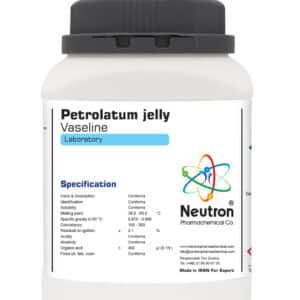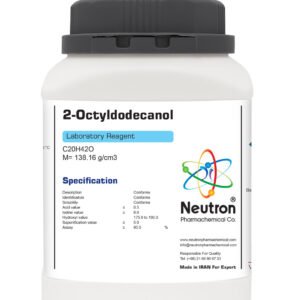سدیم لوریل اتر سولفات 70 % SLES
| Molecular Formula | C12H25O.(C2H4O)2.SO3 |
| Molecular Weight | 376.48 g/mol |
| CAS number | 68585-34-2 |
| HS Code | 3402110000 |
| Storage | Storage at 5 to 30 °C |
| SDS | available |
| Appearance | Conforms | ||
| Identification | Conforms | ||
| Solubility | Conforms | ||
| pH | 7.0 to 9.0 | ||
| Unsulfonated organic material | Conforms | ||
| Chloride | ≤ | 0/5 | % |
| Sulfate | ≤ | 1/5 | % |
| Limit of dioxan | ≤ | 0/005 | % |
| Assay | 68.0 to 72.0 | % |
Sodium Lauryl Ether Sulfate (SLES 70%) is a anionic surfactant widely used in pharmaceuticals, personal care products, and cosmetics as a foaming, emulsifying, and cleansing agent. It is a water-soluble powder or liquid with excellent detergent properties.
🏭⚗️ Production
SLES is produced by ethoxylation of lauryl alcohol, followed by sulfation using sulfur trioxide or chlorosulfonic acid. The product is then neutralized with sodium hydroxide to yield the sodium salt. The final 70% active solution is standardized for consistent surfactant performance in pharmaceutical and cosmetic formulations.
🔬 Properties
SLES 70% appears as a viscous, pale yellow to colorless liquid. It is highly soluble in water and forms stable foams even in hard water. Chemically, it is an anionic surfactant with excellent emulsifying and wetting properties. It is stable over a wide pH range, thermally stable, and compatible with most other surfactants and formulation excipients.
🧪 Applications
In pharmaceuticals, SLES 70% is used in topical creams, gels, shampoos, and liquid soaps as a foaming and cleansing agent. In cosmetics, it is applied in facial cleansers, body washes, and hair care products. It is also used in personal hygiene formulations for its emulsifying and detergent properties. The high concentration allows efficient formulation while minimizing the volume of active ingredient required.
⚠️ Safety
SLES 70% is generally considered safe for topical use, but concentrated solutions may cause skin or eye irritation upon direct contact. Proper handling includes wearing gloves, goggles, and working in a well-ventilated area. It should be stored in tightly closed containers, away from strong oxidizers and extreme heat. In case of spills, affected areas should be rinsed thoroughly with water to prevent irritation.




